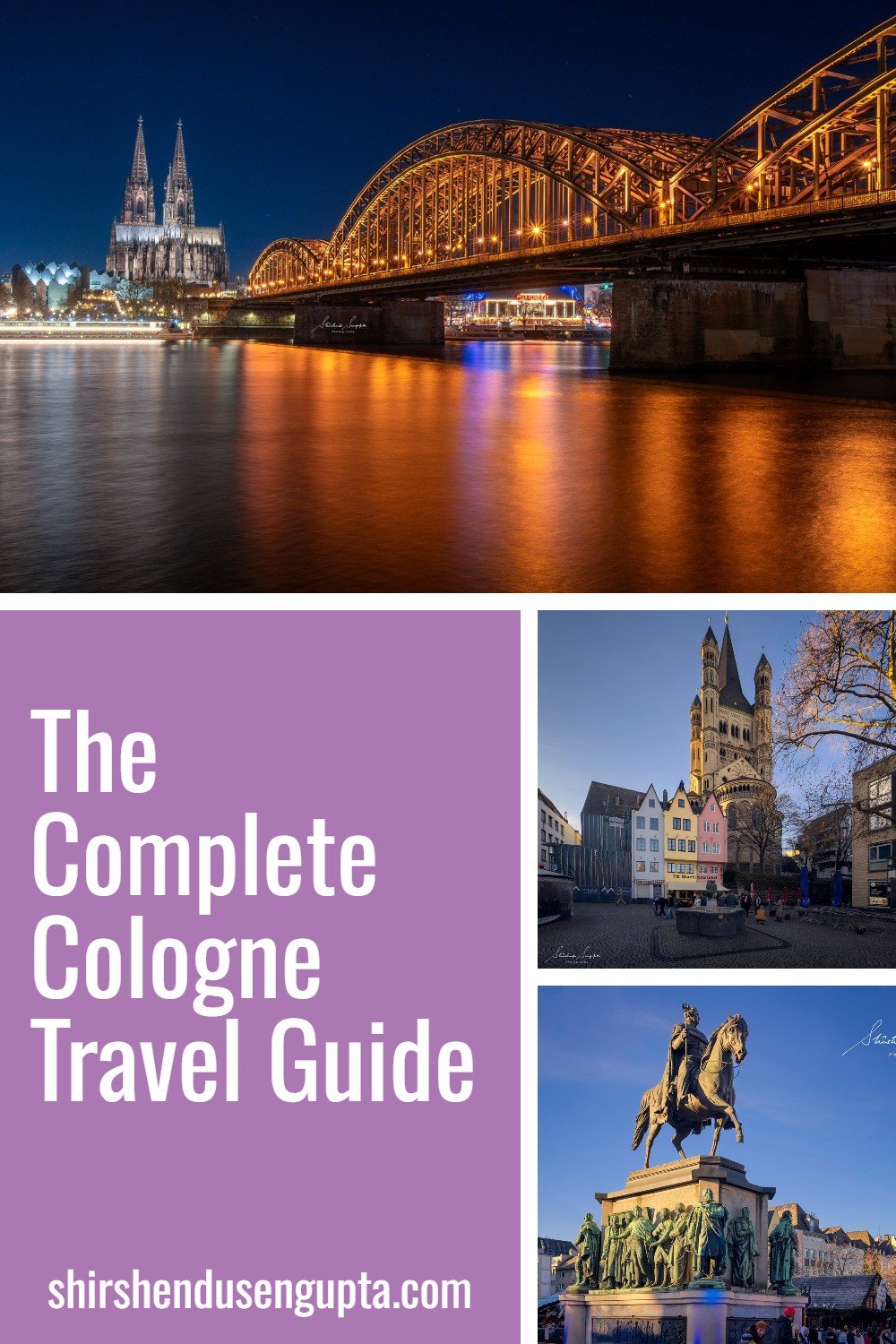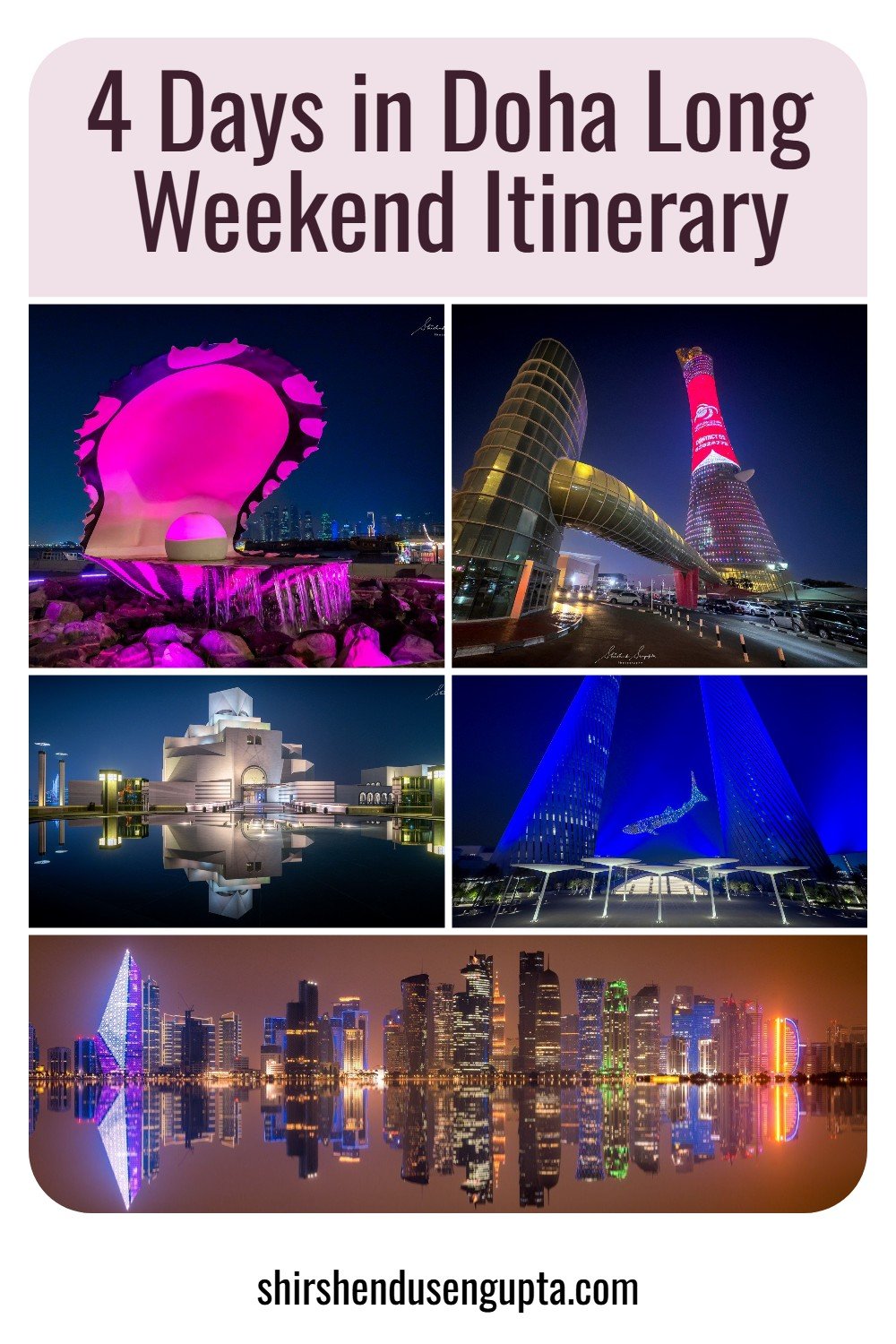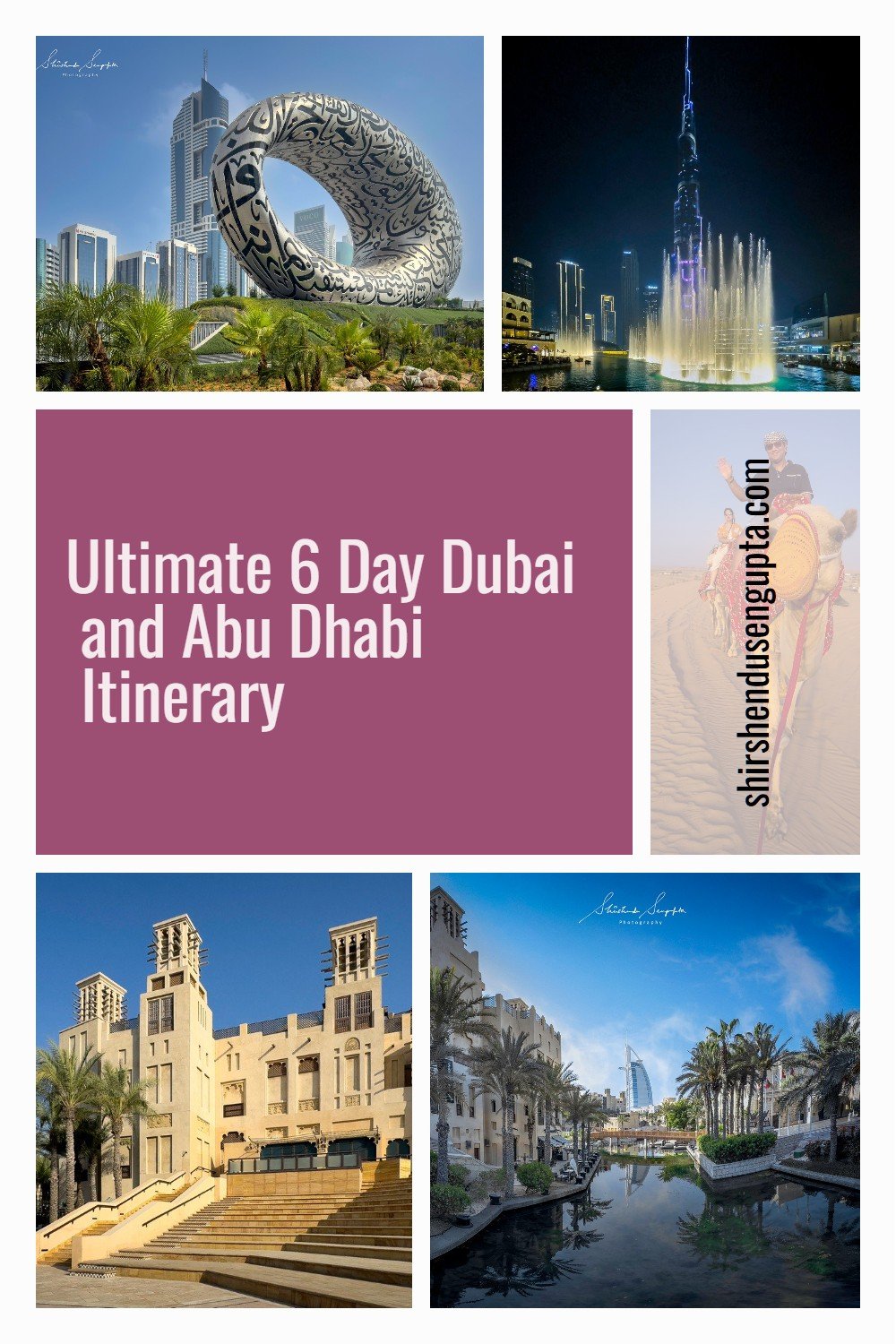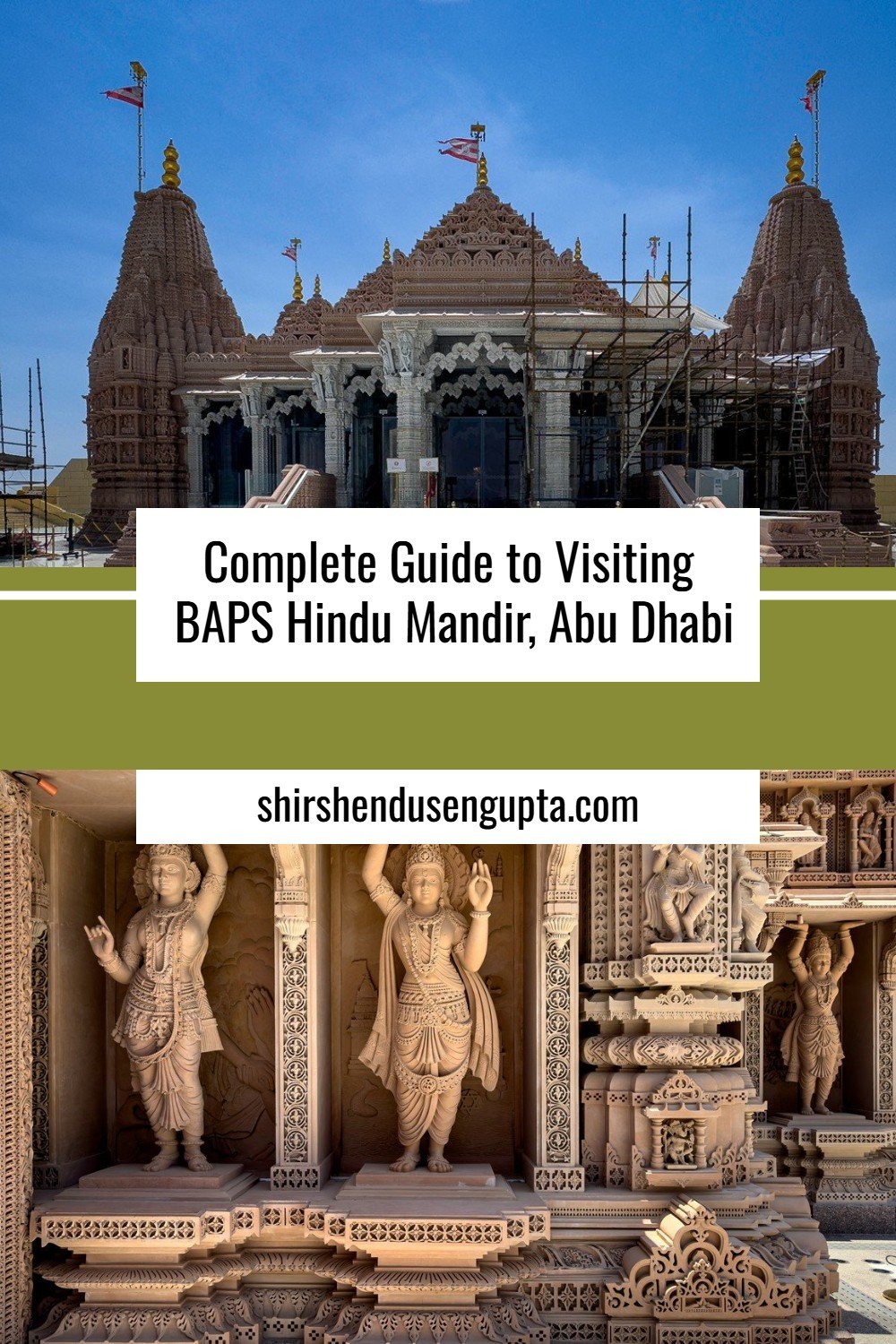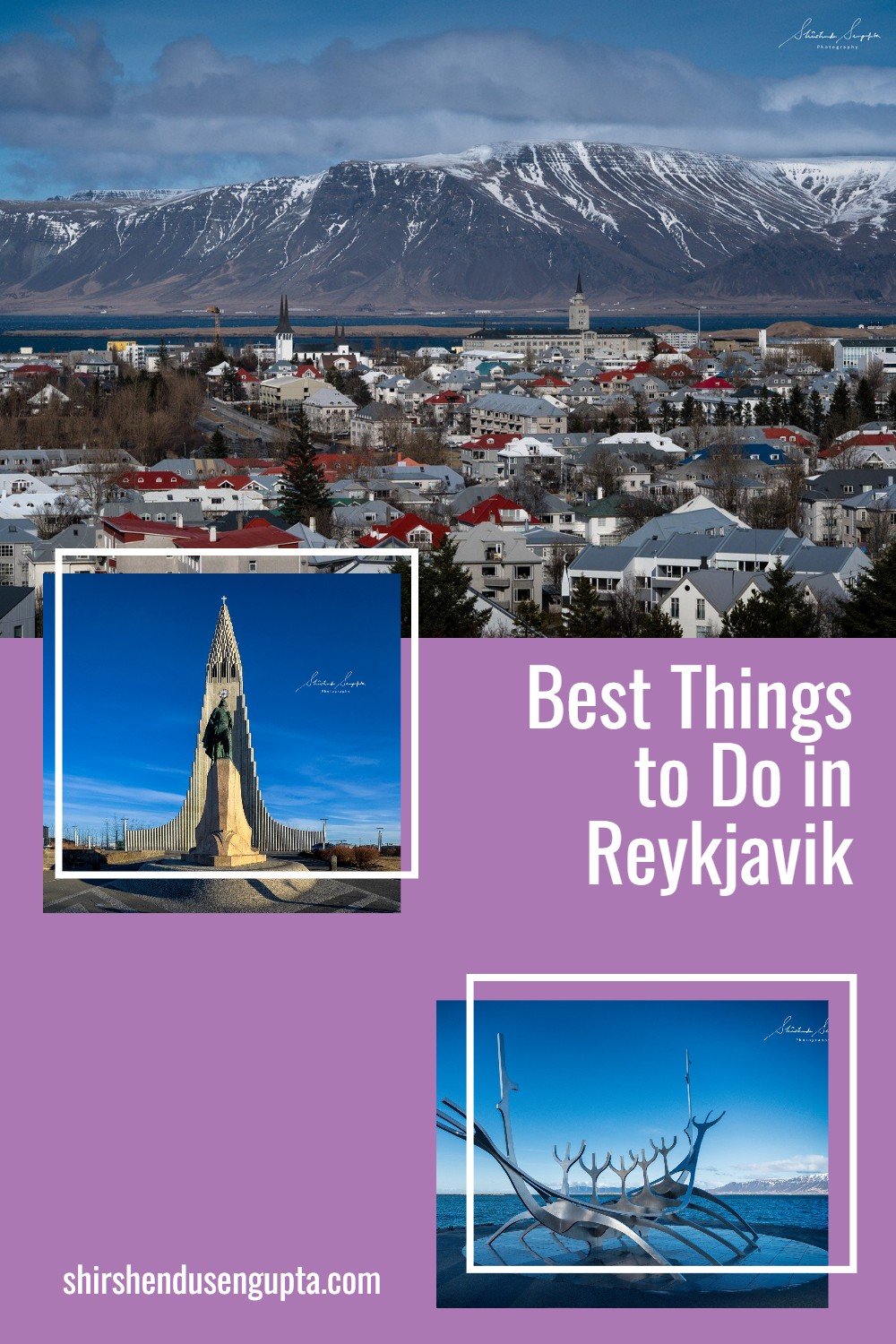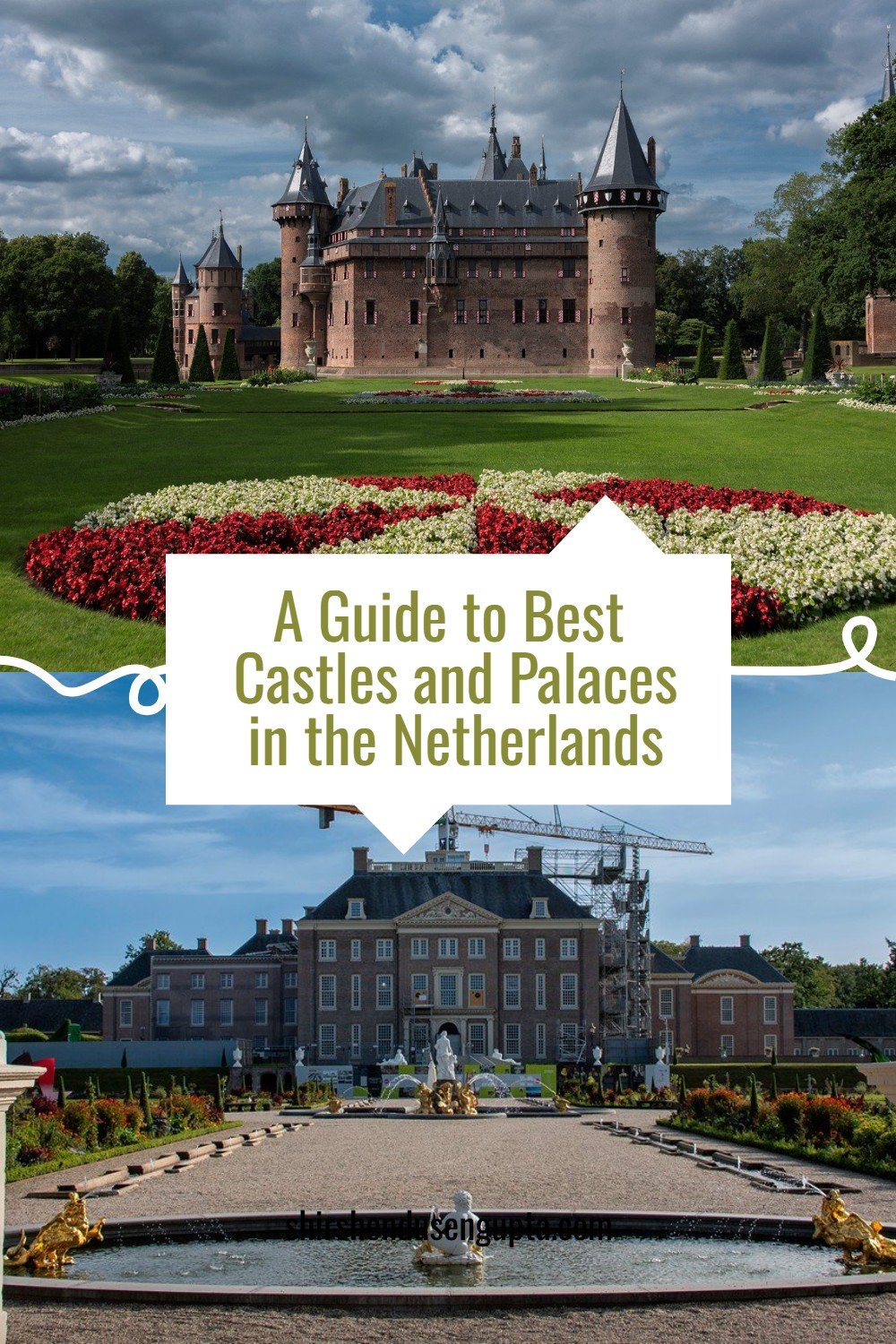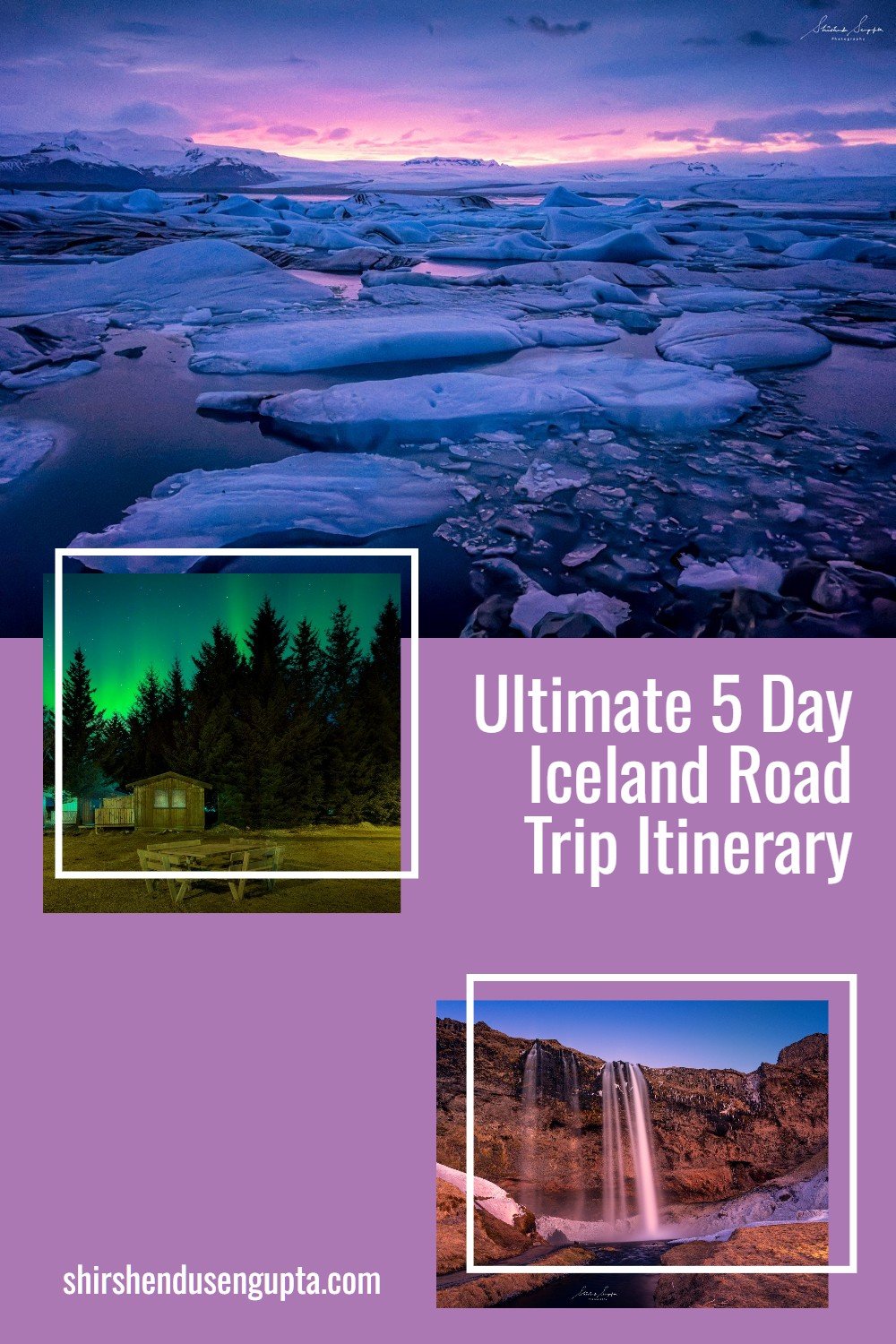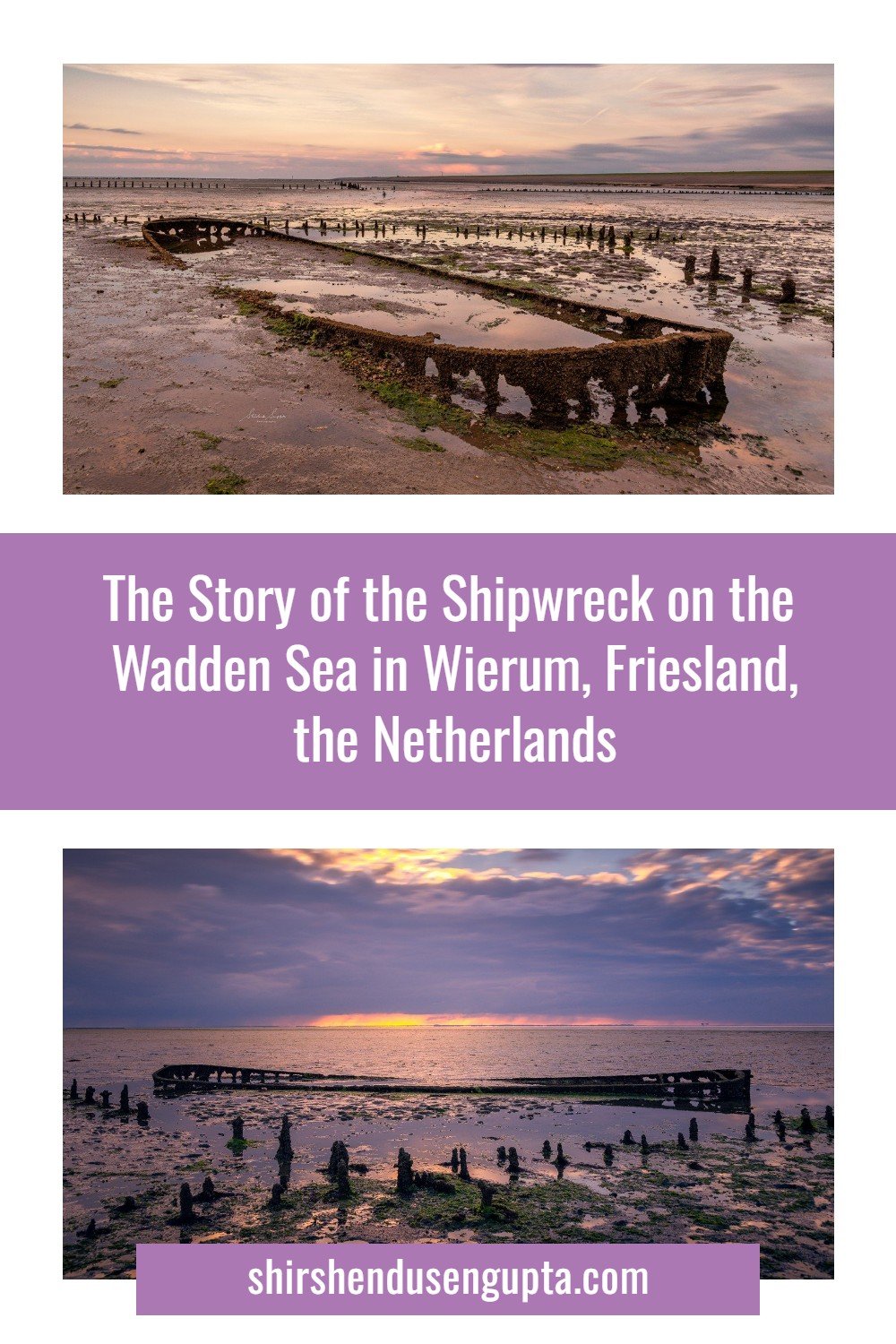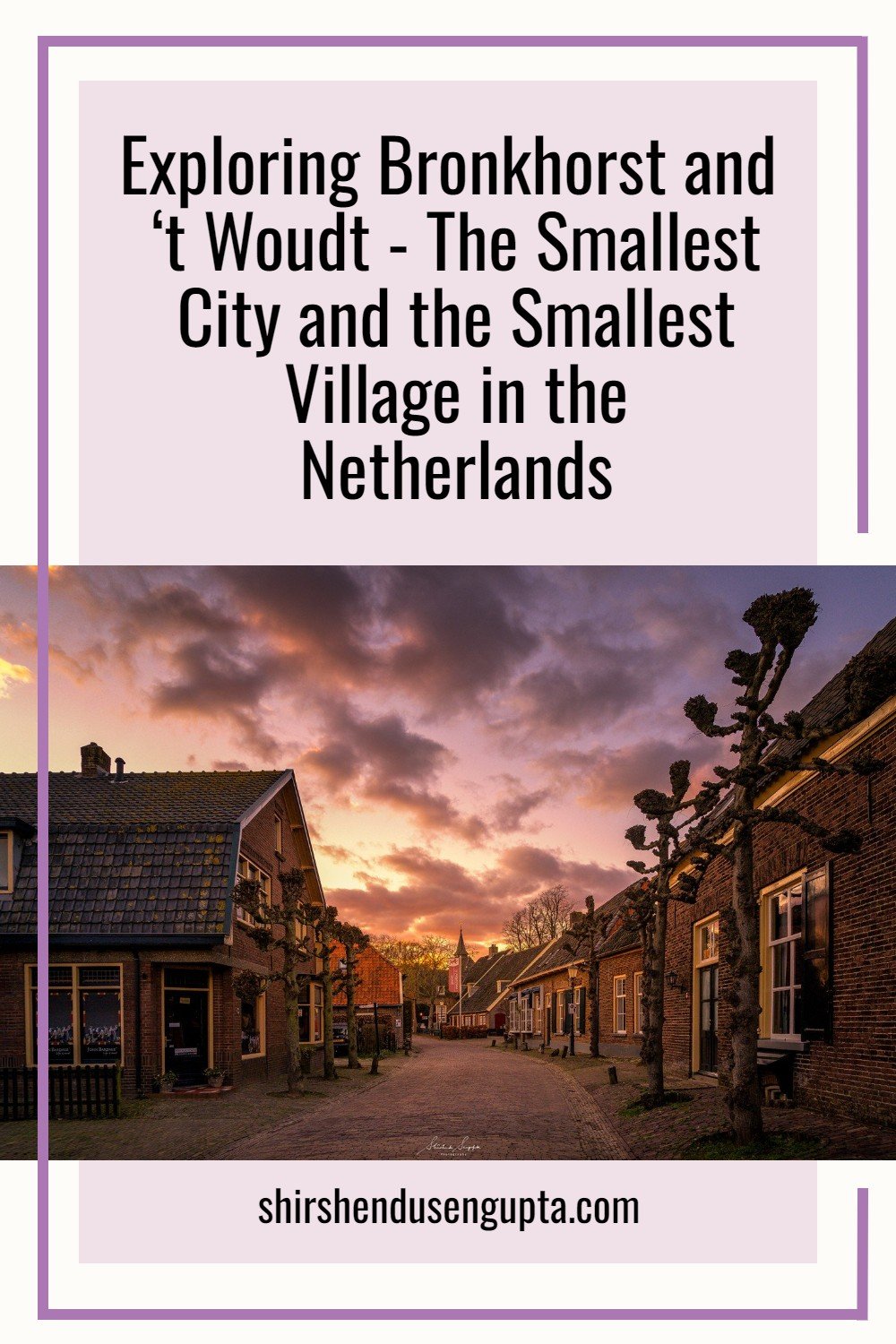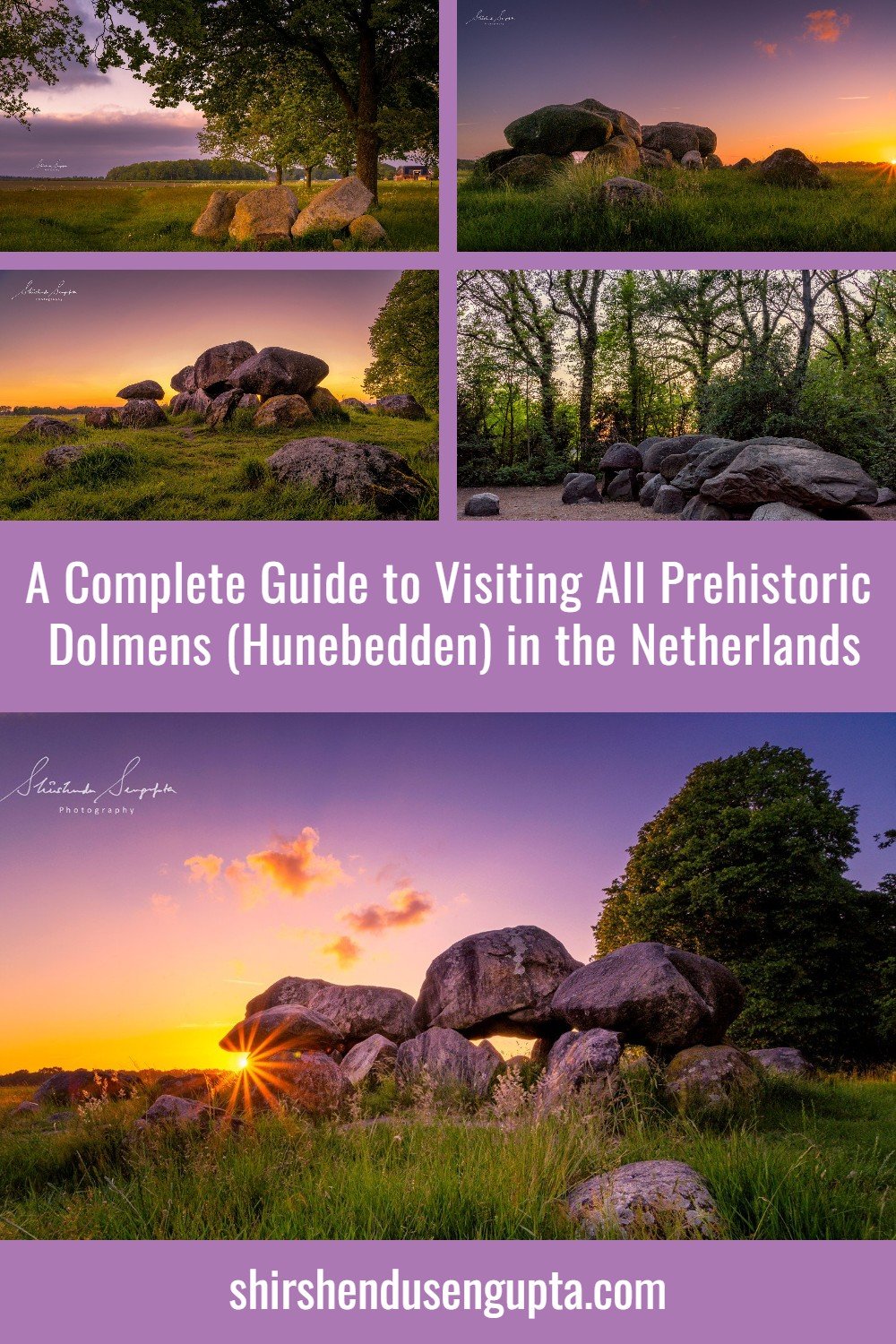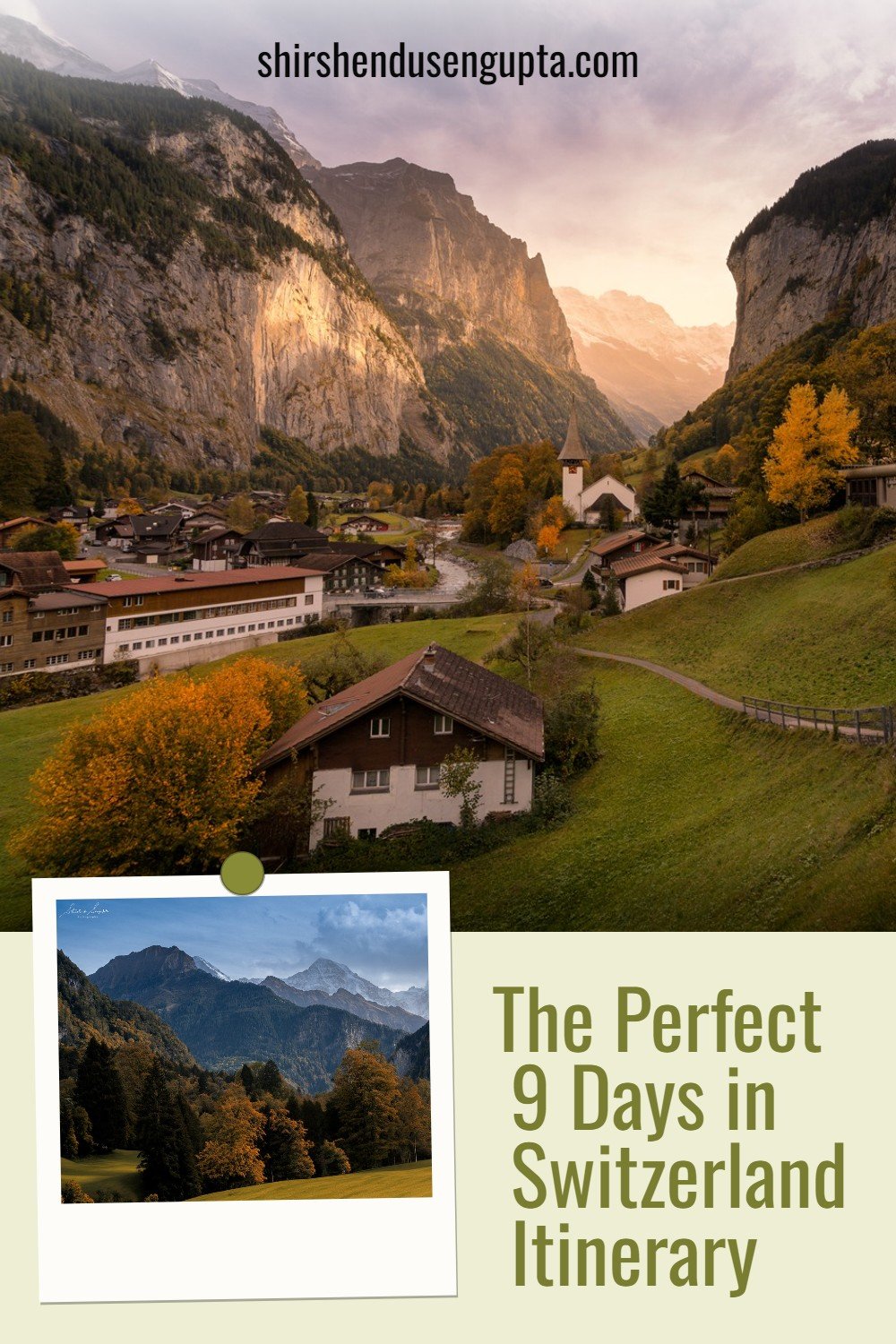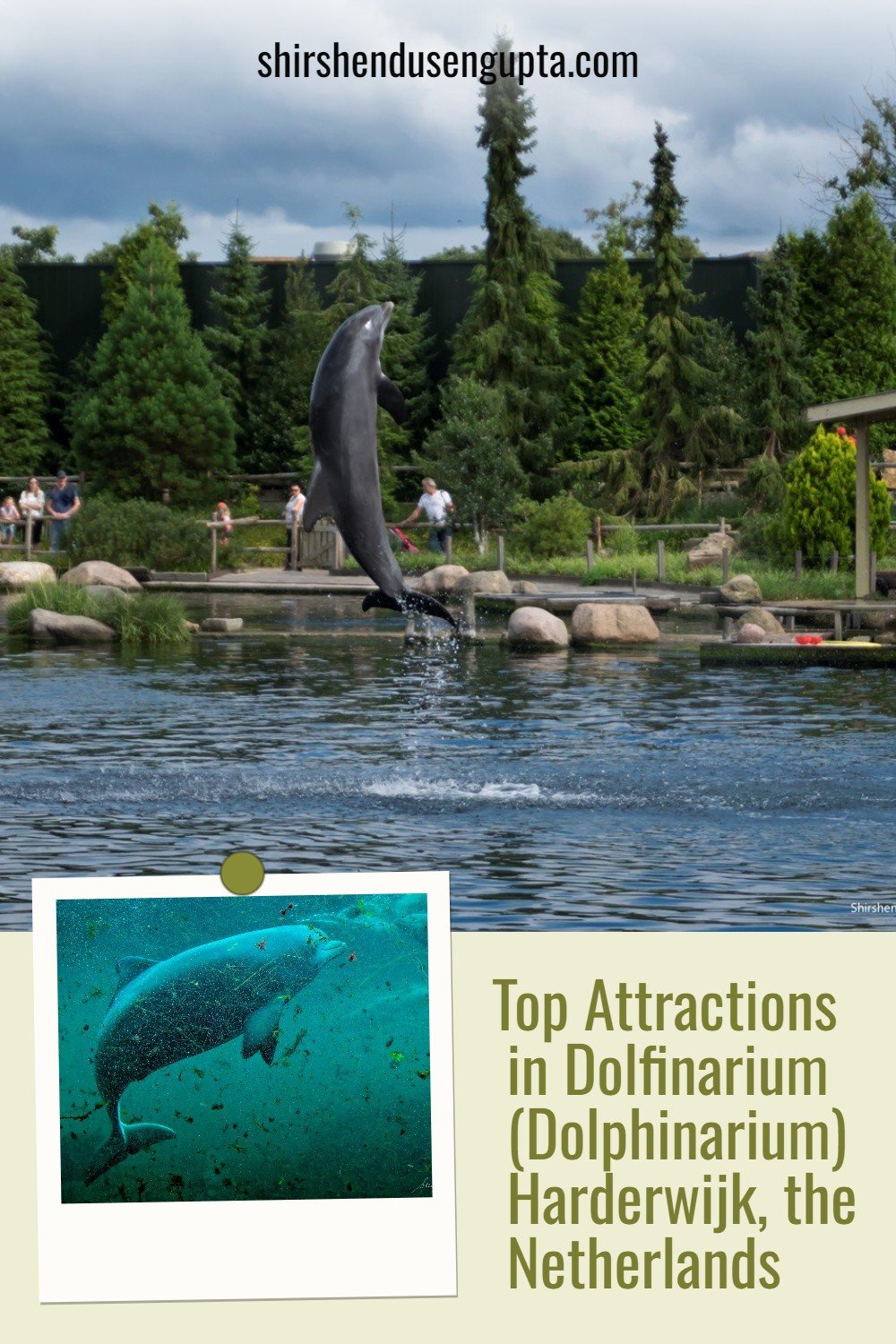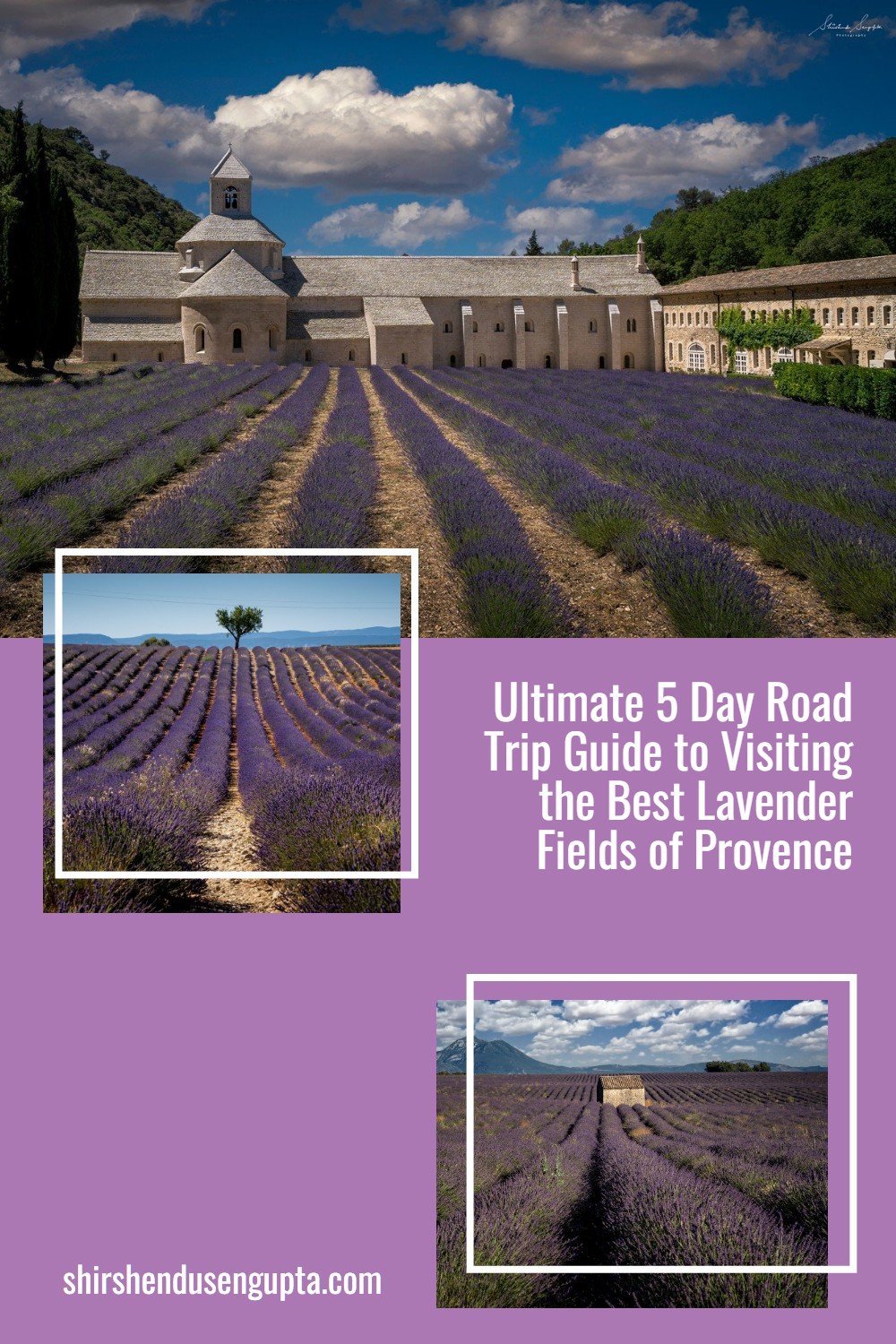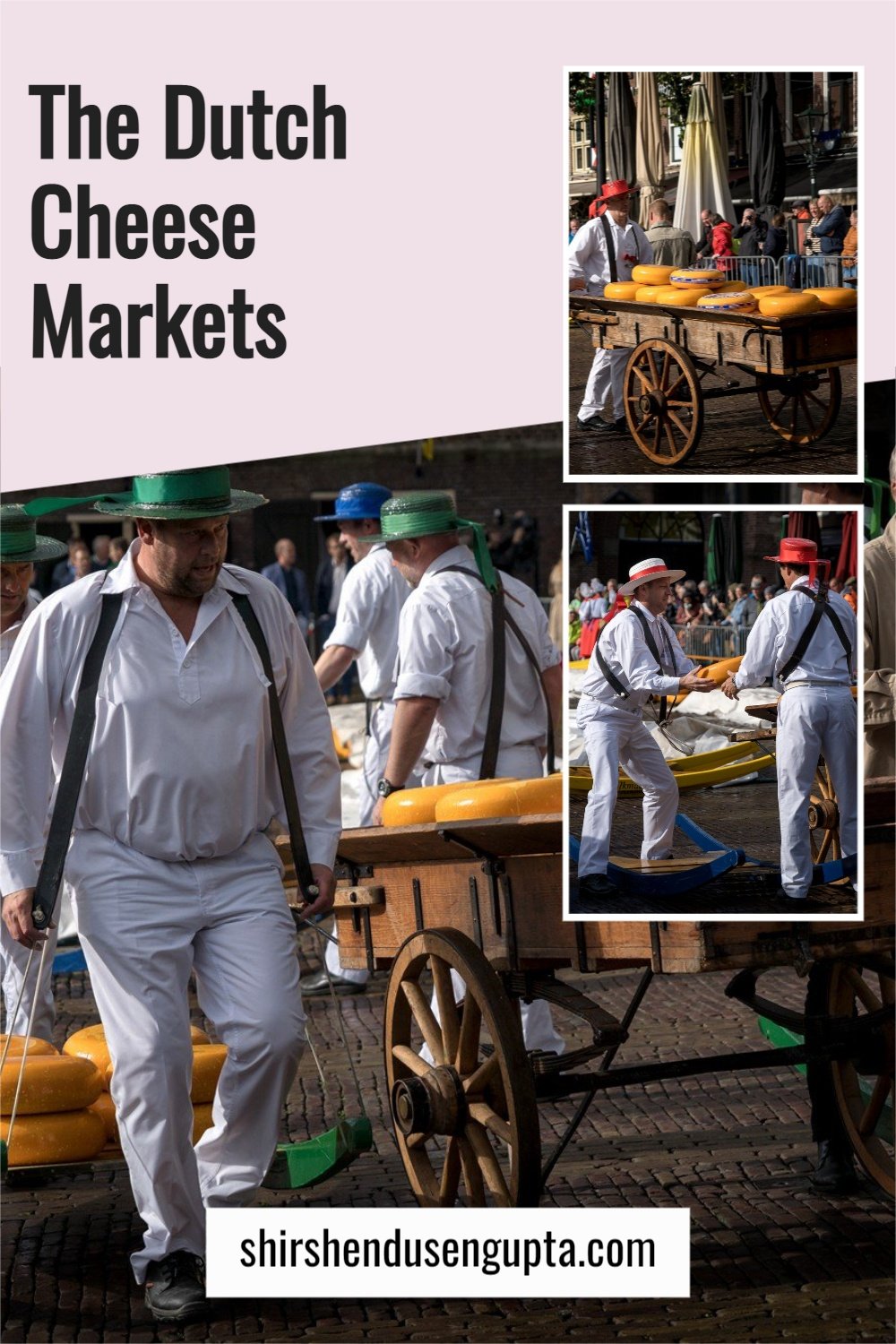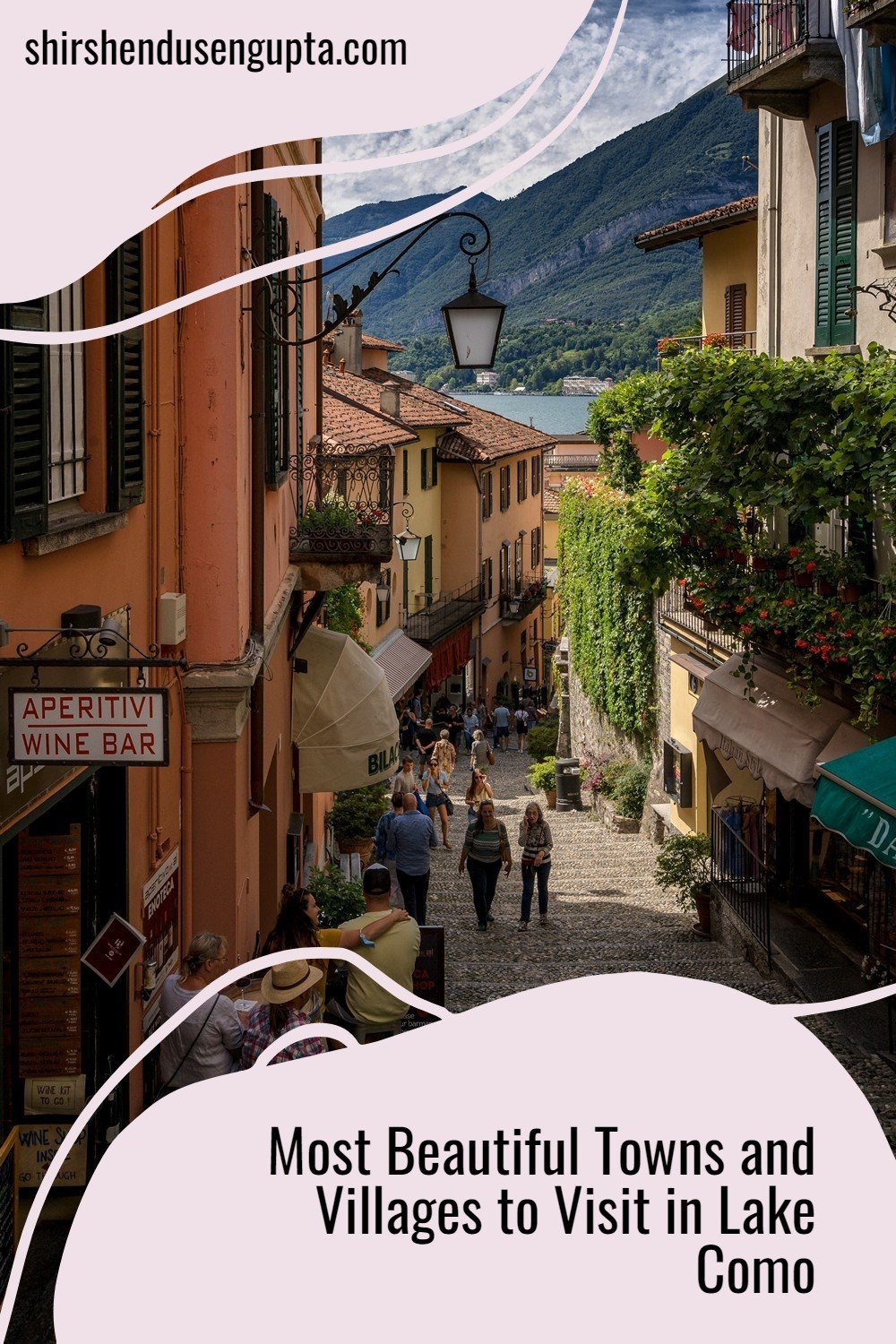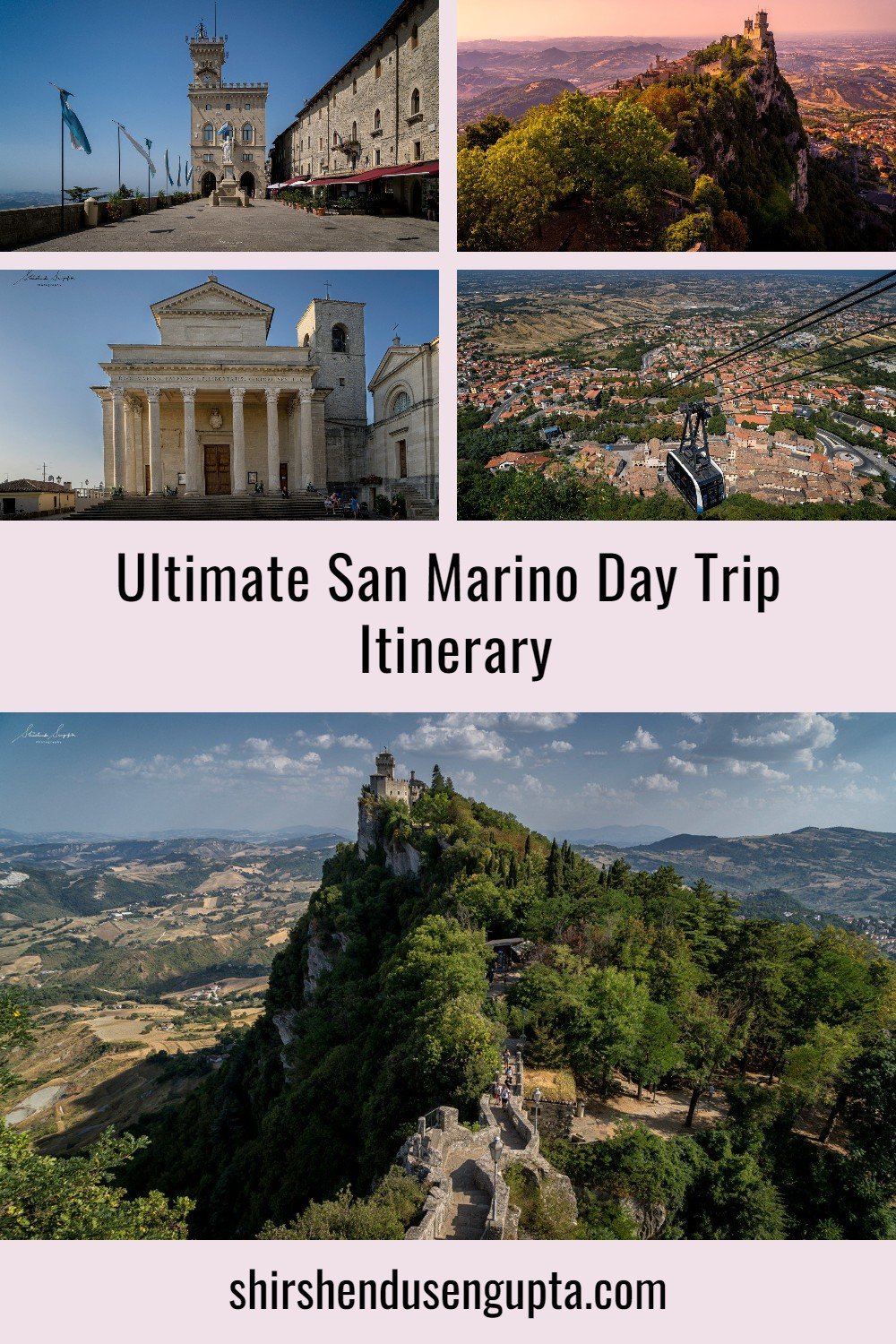42 Best Places and Attractions to Visit in the Netherlands in Summer | 42 Amazing Things to See and Do in Summer in the Netherlands | 42 Top Summer Hot Spots in the Netherlands
Summer in the Netherlands
Summers in the Netherlands can be a genuine celebration with the sun, sea, beach, festivals, music, overnight stays, lovely pavement cafés, delectable food, and fine wine! The longest day of the year, or the Summer Solstice, which occurs on June 21, marks the beginning of summer, according to the astronomical calendar. June, July, and August are regarded as the summer months by meteorologists. As a result of its maritime climate, which is influenced by the North Sea and the Atlantic Ocean, the Netherlands experiences a variety of weather conditions throughout the summer, including a few hot days with temperatures considerably over the 25-degree threshold. The southern and eastern regions of the Netherlands, including the provinces of Gelderland, North Brabant, and Limburg, typically get the warmest weather.
Today I’m going to take you along with me on a ride across the 42 best places and attractions to visit in this beautiful country in summer. Let the journey begin!
42 Best Places and Attractions to Visit in the Netherlands in Summer
1. The Dutch Beaches
Being a maritime country with a 450 km coastline, the Netherlands is famous for its beautiful beaches. Since the Netherlands has a lesser number of sunny days in the year, with the arrival of the summer, beachgoers, wildlife lovers, and watersports enthusiasts visit the splendid Dutch coastal towns to enjoy some fresh air on the beach, have a drink at a beach club, take a stroll down the promenade or through the dunes, watch the seagulls steal french fries from a scared couple, or ride the giant waves on a windy day!
To know more about the Dutch Beaches, please read our article 27 Best Beaches in the Netherlands | Top 27 Dutch Coastal Towns for a Summer Holiday in the Netherlands.
2. The Dutch Dunes
The Dutch Dunes are ever-changing landscapes as a result of the water and the wind's ongoing effect, extending for hundreds of miles and comprising lakes, woods, and hills that contribute significantly to the Dutch environment. The dunes are home to a diverse array of wild flora and fauna. The dunes provide an essential barrier against the occasionally untamed and rising North Sea because nearly a third of the nation is below sea level. In addition to storm surge protection, these exceptional habitats can deliver a number of amazing experiences right from swimming in the natural freshwater lakes, to a peaceful trek appreciating wildflowers and unusual fauna to biking across rolling hills and conquering windswept vantage points that give breathtaking views in a flat country like the Netherlands.
To know more about the most beautiful sand dunes in the Netherlands, please read our article 10 Most Beautiful Sand Dunes in the Netherlands | 10 Best Dutch Dunes National Parks and Nature Reserves.
3. Lavenders
When you think of the Netherlands, the first thing that comes to your mind is an endless ocean of vibrant flower fields. That’s why it has been very aptly dubbed as the ‘The Land of Flowers’ though it’s often equated to ‘The Land of Tulips.’ But to be honest, this beautiful country has a lot more to offer beyond just tulips when it comes to horticulture. Being the largest exporter of flowers in the world, the Netherlands makes up around two-thirds of the world’s total floral sales. And it goes without saying that they aren’t all just tulips. Every year, during the spring months of mid-March to mid-May, the whole country transforms into a vast ocean of flowers. It starts with cherry blossoms, crocuses, daffodils, and hyacinths between mid-March and mid-April, followed by the famous tulips between mid-April and mid-May. But what many of us don’t know is that during summer, we can also find lavenders in the Netherlands.
To know more about where to find lavenders in the Netherlands, please read our article Best Places to Find Lavenders in the Netherlands | Best Lavender Fields in the Netherlands.
4. The Dutch Cheese Markets - Alkmaar, Edam, Hoorn, Gouda, and Woerden
Since before the advent of Christ, the Dutch have been associated with cheese. Researchers have uncovered pieces of cheese-making machinery that date back to 200 BC. Due to the Netherlands' lush environment, which was ideal for cattle rearing, cheese-making had become an integral part of Dutch culture by the Middle Ages. Markets for cheese grew briskly, and communities with weighing privileges were able to construct ‘Weigh Houses’ and enjoyed unique status. Dutch cheese farmers traditionally weighed and sold their cheese on the town's market square normally named the ‘Waagplein’ (weighing square). The farmers' cheese was transported on barrows that weighed about 130 kilos (287 pounds) by teams of authorized ‘Kaasdragers’ (guild cheese-porters). Today, there are only five cheese markets left that are held in the cities of Alkmaar, Edam, Gouda, Hoorn, and Woerden. It's interesting how the first four of those cheese markets have been turned into a play so that people can witness what it was like in the past. People are dressed exactly as they did in earlier times, and all actions are carried out in the same manner.
To know more about the Dutch Cheese Markets and how to visit them, please read our article The Dutch Cheese Markets 2026 | The Cheese Market Cities of the Netherlands - Alkmaar, Edam, Gouda, Hoorn, and Woerden.
5. Netherlands Openluchtmuseum (Netherlands Open Air Museum)
The Netherlands Open Air Museum in Arnhem showcases ancient houses, farms, and factories from all around the Netherlands. It is a national museum dedicated to the culture related to common people's daily lives. It covers key aspects of Dutch history from The Dutch East India Company to the First World War, slavery, and child labor. The fascinating outdoor museum has a few gorgeous windmills scattered throughout, and they're all really cute. The Netherlands Open Air Museum was founded on April 24, 1912, and opened to the public in July 1918. Over the last century, it has grown to become one of the country's most visited museums. The museum receives almost 555,000 visitors each year. With flowers and greenery all around, it is particularly beautiful to visit during summer.
And, if you want to know more about such places to visit iconic windmills in the Netherlands, please read our article 12 Best Places to See the Most Iconic Windmills in the Netherlands | 12 Most Famous Dutch Windmills | Visit The Most Beautiful Windmills of Holland.
6. Zaanse Schans and Zaandam
The Zaanse Schans is a small Dutch village on the Zaan river 20 km north of Amsterdam, in the neighborhood of Zaandam. It has an open-air museum feel that offers a peek into the Dutch life of the golden ages with its traditional wood houses, vibrant windmills, and workshops. The Zaanse Schans draws in almost a million visitors each year, and it's one of the Netherlands' best-loved destinations. Together with the neighboring city of Zaandam, famous for its wooden Zaan-style houses, it is a must-visit destination when you’re in the Netherlands and especially during summer.
To know more about Zaanse Schans and Zaandam, please read our article 9 Best Things to See and Do in Zaanse Schans Windmill Park (Zaandam) | All You Need to Know to Visit Zaanse Schans (Zaandam) on a Day Trip from Amsterdam, the Netherlands.
7. UNESCO World Heritage Windmills of Kinderdijk
In the gorgeous wetlands around Dordrecht, 25 kilometers east of Rotterdam, stands nineteen historic windmills, constructed in 1740. The windmills of Kinderdijk were built to pump water out of the low-lying Alblasserwaard polder situated at the confluence of the Lek and Noord rivers, thereby preventing floods in the region. Today, they symbolize centuries-old Dutch engineering for water management. In 1997, they were included in the list of UNESCO World Heritage sites. The Windmills of Kinderdijk are one of the most photographed places in the Netherlands.
To know more about Kinderdijk, please read our article First Timer’s Guide to Visiting the UNESCO World Heritage Windmills of Kinderdijk | Tips on the Best Things to See and Do on a First Time Day Trip to Kinderdijk.
8. Urk
Urk, is a centuries-old fishing community, with a distinct culture and history. Terrace cafes on the charming waterfront welcome you to sample delectable smoked eel from the IJsselmeer lake or freshly fried fish from Urk fisherman. I also recommend a visit to the lighthouse, museum, monuments, and the fish market on the IJsselmeer lake. And after a visit to the lighthouse, jump into the water at one of the two little beaches on the IJsselmeer lake's edge.
To know more about the Dutch Coastal Towns, please read our article 27 Best Beaches in the Netherlands | Top 27 Dutch Coastal Towns for a Summer Holiday in the Netherlands.
9. Blokzijl
A little settlement called Blokzijl is located to the southwest of Overijssel. Tourists that enjoy water sports and day trippers frequent this city. A trip to this town is frequently paired with trips to Giethoorn and the Weerribben-Wieden National Park. Blokzijl was initially a village on the Zuiderzee, before evolving into a stronghold. Here, hostile Spanish ships traveling inland were halted. Anyone who strolls along Blokzijl's harbor chamber will observe that the atmosphere and customs have persisted. Visits to the charming alleys and inviting waterfront patios are well worthwhile.
10. Broek in Waterland
The charming village of Broek in Waterland is only a short distance from Amsterdam. Broek, which is surrounded by water, is one of Holland's most beautiful spots, comparable to well-known Dutch "water villages" such as Giethoorn. The historic wooden houses at Broek in Waterland are the most remarkable sight. Broek in Waterland is a town with 'fifty shades of gray,' as they are painted in primer. These lovely homes have ceremonial entrances (only used for weddings and funerals), carved and colorful lintels (a technique of identifying a house before house numbers were invented), and stone tiles on the chimney (to prevent witches from flying in, true story). During a warm summer day, a stroll through the neighborhood feels enchanting with greenery all around, making it a walk to remember.
To know more about Broek in Waterland, please read our article Experience Waterland | 11 Most Charming and Beautiful Authentic Dutch Villages of Waterland | The Wet Back Garden of Amsterdam, the Netherlands.
11. Marken
Marken is a small fisherman’s village in North Holland, situated on the lake Markermeer. It never fails to charm the visitors with its canals, traditional colorful wooden houses, and drawbridges. At the end of the village, there’s a quaint lighthouse known as ‘Paard van Marken’ meaning ‘Horse of Marken’, accessible only on foot, about a half-hour walk over the dike. If you are in Marken during summer, I recommend a tranquil walking experience over the dike to the lighthouse via the raw Dutch countryside leaving the hustles and bustles of the city far behind.
To know more about Marken, please read our article Experience Waterland | 11 Most Charming and Beautiful Authentic Dutch Villages of Waterland | The Wet Back Garden of Amsterdam, the Netherlands.
12. Edam
Edam is one of Holland's oldest towns and is located near Amsterdam. Edam is known for its Edam cheese, so cheese lovers beware. It was a crossroads on international commerce routes when it was built in the Middle Ages on a strategic site between the sea and rivers. With a deep harbor and numerous shipyards, Edam swiftly grew into a formidable city. Water was very important to Edam. That is why the people of Edam have long rejected colonial intentions to reclaim fresh land and safeguard the area from flooding. During summer, the town is surrounded by greenery all around.
To know more about Edam, please read our article Experience Waterland | 11 Most Charming and Beautiful Authentic Dutch Villages of Waterland | The Wet Back Garden of Amsterdam, the Netherlands.
13. Volendam
Volendam is one of the most popular tourist spots of the Netherlands. Two million people visit this historic fishing community every year. The historic sea dike, a lengthy stretch of colorfully painted homes with eateries, cafes, and restaurants, is Volendam's primary attraction. In the summer, this area is bustling with tourists enjoying the water. If you are in the neighborhood stop by Volendam for lunch because it's the best place to try authentic Dutch fish delicacies like raw herring with onions and pickles and fried cod fish pieces (kibbeling). If fish is not your thing, try little Dutch fluffy pancakes (poffertjes).
To know more about Volendam, please read our article Experience Waterland | 11 Most Charming and Beautiful Authentic Dutch Villages of Waterland | The Wet Back Garden of Amsterdam, the Netherlands.
14. Hoorn
Hoorn was at its peak in the seventeenth century, when it was one of the most significant Dutch East India Company locations. Hoorn, like Amsterdam and Enkhuizen, grew into a rich town. Hundreds of monuments and cathedrals serve as reminders of this significant historical epoch even today. The charming old houses of the small town beside the IJsselmeer lake today house lovely businesses and excellent eateries. While meandering around town, visitors come across galleries, studios, cafes, and specialty shops. Hoorn was also the location that gave the name Cape Horn to the southernmost point of the American continent. Even today, the harbor town's face bears the imprint of its maritime past.
15. Enkhuizen
The picturesque harbor town of Enkhuizen, situated on the largest inland lake in western Europe, the IJsselmeer, was among the most thriving cities in the Netherlands in the 17th century. Together with the city of Hoorn, it gained importance as a member of the Dutch East India Company. In Enkhuizen, the historic sights are easily accessible via a stroll through the old city. In Enkhuizen, the Zuiderzee Museum is renowned for showcasing the history of Enkhuizen and the previous Zuiderzee (Southern Sea).
16. Giethoorn
Giethoorn is an enchanting Dutch fairytale village with centuries-old picturesque thatched-roof houses, a myriad of canals, and numerous quaint wooden bridges situated in the province of Overijssel amidst the Weerribben-Wieden National Park - a vast nature reserve. Since the old part of the village has no car roads and hence the only means of transportation are walking, cycling, and boating through a network of small canals, it has earned the title of 'Little Venice of the Netherlands' or 'Small Venice of the North.' Apart from the transportation part, there's no similarity between the Venice of Italy and the Venice of the Netherlands, Giethoorn.
To know more about Giethoorn, please read our article 7 Best Things to See and Do in Giethoorn | A Dutch Fairytale Village without Roads | Little Venice of the Netherlands | Small Venice of the North.
17. Hindeloopen
If you want to visit one Frisian city that reflects the whole of Friesland in a nutshell, that’s Hindeloopen. Diked pastures with grazing sheep, winding cobbled back alleys, flower-bedecked mesh of canals, a plethora of drawbridges and a jungle of yachts on the IJsselmeer, the smallest city of Friesland fairly captures its overall characteristics. And just if you thought Frisian is difficult enough to comprehend, in Hindeloopen, they speak a strongly accentuated dialect named Hindeloopers that retains the medieval vowels giving it a distinctive sound.
To know more about Hindeloopen, please read our article Discover Friesland | 9 Best Places to Visit in Friesland, the Netherlands.
18. Dokkum
With well-preserved fortified town walls, stepped gables, canals, and drawbridges, the historic city of Dokkum instantly takes you back a few centuries. In summer, the walking routes, bridges, and strongholds are lined with flowers creating one of a kind ambiance. Apart from these, the two working Dokkum windmills standing on the western side are also trendy tourist spots.
To know more about Dokkum, please read our article Discover Friesland | 9 Best Places to Visit in Friesland, the Netherlands.
19. Sneek
Sneek is popularly known as the water sporting capital of Friesland. The final of the Skûtsjesilen championships happens here. It also hosts the most significant inland water event in Europe - Sneekweek.
Sneek was founded in the 10th century and served as an important trading hub for many years. Like every mercantile city in the Netherlands, Sneek has a canal belt constructed for facilitating water traffic throughout the city. And one of the most iconic landmarks along the canal belts of Sneek is the Waterpoort (Water Gate). Little is known about Sneek's middle ages watergate. It’s thought to be built around 1492 by an unidentified designer, and its primary function was to manage the water streaming into the town. At that time, towns and cities were constructed around thick stone walls for defense from opponent intrusion. The Dutch utilized the water as moats as an additional defense line, taking benefit of its low-lying terrain.
To know more about Sneek, please read our article Discover Friesland | 9 Best Places to Visit in Friesland, the Netherlands.
20. Zeeland - Vlissingen, Domburg, and Middelburg
Zeeland is a fascinating province where you'll find the most gorgeous beaches, clean seawater, and seafood specialties like mussels and lobster. Vlissingen, Domburg, Middelburg, Renesse, Goes, Oostkapelle, Yerseke, and other attractive towns may be found in Zeeland. Every town has its own personality, and it is especially lovely in the summer when the houses, drawbridges, and light posts are all decked out in flowers.
To know more about the Dutch Beaches and coastal towns, please read our article 27 Best Beaches in the Netherlands | Top 27 Dutch Coastal Towns for a Summer Holiday in the Netherlands.
21. Reitdiephaven
Reitdiephaven in Groningen is one of the most beautiful and coziest mini marinas in the Netherlands. It is a place full of hustle and bustle with pastel-colored row houses, shops, restaurants, and supermarkets surrounding the marina. You can easily spend a relaxing afternoon with your family taking a leisurely stroll, shopping, and dining at the marina. You can also rent a boat and go sailing.
22. Kasteel de Haar
De Haar Castle is the largest and most luxurious castle in the Netherlands and a visit should be on everyone's wish list for that reason alone. Marvel at the imposing fairytale building, towers, moats, gates, and drawbridges, then stroll through the beautiful castle gardens that are exceptionally breathtaking during summer.
To know more about Kasteel de Haar and how to visit it, please read our article Explore the Fairytale Kasteel de Haar (De Haar Castle) in Haarzuilens, Utrecht | Day Trip from Amsterdam to the Largest Castle in the Netherlands.
23. Paleis Het Loo
At first glimpse, the Dutch royal family’s Versailles-like handsome baroque summer palace of ‘Het Loo’ (meaning “clearing in the woods”) seems just as it was when it was built during the 17th century in the middle of the woodlands of Apeldoorn, in the province of Gelderland in the Netherlands. But 10 meters underneath the courtyard, an injection of engineering expertise spanning 5,000 square meters and costing €171m has created an extraordinary underground Spanish Macael marble museum that showcases the history of the House of Orange. A part of European history has passed through its rooms, from Louis Napoléon, appointed as king in the 19th century by his brother Napoleon Bonaparte, then Emperor of France, to the German troops stationed there during World War II. Today, Paleis Het Loo is the largest, authentic 17th-century palace of the House of Orange-Nassau.
To know more about Paleis Het Loo and how to visit it, please read our article 12 Things to See and Do in Museum Paleis Het Loo | All You Need to Know Before Visiting Het Loo Palace, Apeldoorn, the Netherlands.
24. Muiderslot
Muiderslot (or Muiden Castle) is the Netherlands's oldest and best-preserved medieval castle. One of the most well-known castles in the Netherlands, it has appeared in numerous Middle Ages-themed television programs. Situated at the mouth of the Vecht River in Muiden, where it flows into the IJsselmeer Lake that used to be the Zuiderzee, the castle has a lengthy and stormy history. It was completed in 1285 by Count Floris V. The eminent author, poet, and historian PC Hooft resided there in the 17th century. It’s a fantastic place to spend a day with your family exploring the castle and the surrounding grounds that host a restored plum orchard, vegetable, and herb garden!
To know more about Muiderslot and how to visit it, please read our article Rijksmuseum Kasteel Muiderslot | Amsterdam Castle Muiderslot | Muiden Castle, the Netherlands.
25. The Pyramid of Austerlitz
In 1795, the French stationed an army in the Netherlands. In 1804, General Marmont was appointed the commander of both the Batavian and the French troops. To unify them, Marmont decided to make them exercise together on the heathland between Woudenberg and Zeist. A huge encampment was created to accommodate the troops and many citizens, who were hired to take care of the massive army, which consisted of more than 18,000 men. The shelters of the latter were the start of the current village of Austerlitz. Soon, Marmont's army became a well-oiled war machine and because the late summer of 1804 was beautiful, Marmont decided that he and his soldiers could stay awhile before returning to their winter quarters. This did mean, however, that his troops had to have something to do. So Marmont ordered them to build a pyramid of sand and turf cut from the heath. Six years before, Marmont had accompanied Napolean on a military campaign to Egypt, where he had seen the mighty pyramids of the pharaohs. He was keen to leave the world something equally grand. After 27 days of working with military precision, a structure had been erected on one of the highest points in the Utrecht Hills. On top, a wooden obelisk was built, and a lead tube with a number of documents in it had been buried in it. There is no pyramid with an obelisk on top anywhere in the world.
The Pyramid's festive opening was held on October 12, 1804. It goes without saying that Marmont hoped that it would always carry his name for all eternity, but unfortunately for him, King Louis Bonaparte rechristened it 'Pyramide van Austerlitz' a mere two years later to honor Napoleon's victory over the Austrian and Russian armies at Austerlitz (now Slavkov in the Czech Republic) in 1805.
To know more about the Pyramid of Austerlitz and how to visit it, please read our article Monument De Pyramide van Austerlitz | The Dutch Pyramid of Austerlitz located in Woudenberg (Utrecht), the Netherlands.
26. The Dutch Kremlin
Let me ask you another “Did you know?” question. Did you know there is a ‘Kremlin’ in the Netherlands? If not, then you ought to visit this place.
Inspired by Classical and Greek mythology, Biblical parables, Italian, Russian, and Eastern Orthodox architecture and powered by imagination, craftsmanship, and technical skills, Ger Leegwater, a retired steel sheet employee, single-handedly constructed this remarkable ensemble of buildings and sculptures in his private sculpture garden in Winkel, a small village in the Dutch province of North Holland. Started in 1980, the work demanded relentless effort, passion, and perseverance over 40 long years to finally establish this vibrant art exhibition.
To know more about the Dutch Kremlin and how to visit it, please read our article Kunsttuin Nederlands Kremlin | The Dutch Kremlin | A Unique Sculpture Garden by Ger Leegwater in Winkel, the Netherlands.
27. The Dolmens of Drenthe and Groningen
Let me ask you a “Did you know?” question. Did you know that there are Stonehenges in the Netherlands? And that they are older than the English Stonehenge and the Egyptian Pyramids? And that too not just 1, but 54? If not, then you must know!
Dolmens are megalithic tombs found all over Northwestern Europe dating back between 5000 and 3000 BC in the Neolithic period (New Stone Age). Literally meaning “stone tables” (derived from the Breton words "dual" and "maen," signifying table and stone, respectively), dolmens are composed of one or more capstones covering at least three, but frequently (many) more standing supporting stones. Based on current theory, Dolmens are thought to be the remnants of ancient burial chambers. For centuries, the Dutch believed that huynen (giants) had made the hunebedden (meaning giant beds in Dutch), from where the word was derived. In reality, the dolmens of the Netherlands were built by farmers belonging to the Funnel-beaker Culture between 3350 and 3030 BC, making them older than the English Stonehenge and Egyptian pyramids. The dolmens are scattered across the provinces of Drenthe and Groningen. Drenthe has 52 dolmens and Groningen has 2 making it a total of 54 dolmens in the Netherlands.
To know more about the Dolmens and how to visit them, please read our article A Complete Guide to Visiting All 54 Prehistoric Dolmens (Hunebedden) of Drenthe and Groningen in the Netherlands | Dolmen (Hunebed) Route with Map, Information, Tips, and Tricks.
28. Amsterdam
Amsterdam never comes to life more than in the summer, when the city's parks, canals, and streets become a bustling kaleidoscope of activity. There are countless activities to choose from during the warmer months, whether you want to party all day at a festival, relax on the beach, take a boat out to explore the canals, or have a BBQ in the park.
29. Haarlem
It takes only 15 minutes to get from Amsterdam to the historic city of Haarlem, the capital of the province of Noord-Holland. It's a definite must-see if you want to experience life in the Netherlands as a local would. With its cobblestoned alleyways, Gothic cathedrals, a bustling main square, and the iconic postcard windmill of ‘Molen de Adriaan,’ Haarlem is like a more laid-back, relaxed version of Amsterdam.
To know more about such places to visit iconic windmills in the Netherlands, please read our article 12 Best Places to See the Most Iconic Windmills in the Netherlands | 12 Most Famous Dutch Windmills | Visit The Most Beautiful Windmills of Holland.
30. Delft
Delft, the birthplace of the Dutch Baroque Period painter Johannes Vermeer of the 'Girl with the Pearl Rings' fame, is known worldwide for its blue earthen pottery named Delftware. A stroll along canals, churches, mansions, and courtyards in the old town center Markt takes you back in time to the glorious days. The town square springs back to life with Delft university students enjoying the outdoor terraces on the weekend.
31. Gouda
Gouda is famed for its delicious Gouda cheese and scrumptious stroopwafels (syrup waffles), but it has much more to offer. In this lovely historic city full of fashionable places and enthusiastic people, there is much to see. Old and new mix and combine in Gouda, from The Markt, the center square with its iconic town hall, to the exquisite stained-glass windows of the Sint-Jans church, and from street cuisine to the Netherlands' first Fairtrade street. In other words, it's the ideal location for a city excursion.
32. Thorn
Thorn was established as an abbey for noblewomen around 990 AD. In the late 18th century, as Thorn fell to the French and the noblewomen fled the town, many poor people migrated to the city. The French had a strange method of calculating taxes based on the size of the windows. To evade higher taxes, the poor residents made their windows smaller by bricking them and painting the house white to conceal the distinction between the new and the old bricks. Today, the city is known for this ‘White Village’, which was once a symbol of desperation.
To know more about the White Village of Thorn and how to visit it, please read our article The White Village of Thorn | 7 Best Things to See and Do in the White Town of Thorn in Limburg, the Netherlands.
33. Valkenburg aan de Geul
Located in Limburg, the southernmost province of the Netherlands, Valkenburg, a marlstone hamlet nestled amid moss-green hills in the heart of the 'Heuvelland' nature reserve, is the country's oldest tourist destination and one of the few places in the country with actual mountains. It has been a landmark for nearly 130 years with its undulating terrain and picturesque surroundings, as well as its two major attractions - the famed castle ruins and marlstone caves. Even though just the remains of Castle Valkenburg exist, it is nonetheless worth a visit because it is the country's only castle built on a hill and therefore offers a panoramic view of the city from its broken ramparts.
To know more about the best places to visit in Valkenburg aa de Geul, please read our article Top 15 Exciting Things to See and Do in Valkenburg aan de Geul on a Day Trip | 15 Best Activities and Sightseeing Attractions of Valkenburg, the Netherlands.
34. Maastricht
Located in Limburg, Maastricht is a magnificent city, that has a lot to offer, ranging from culture to shopping to excellent restaurants. When strolling around the historic Old Town of Maastricht, you will quickly realize that it is one of the oldest cities in the Netherlands. While marveling at the churches, city walls, huge merchant houses, and large squares blended together, you will fail to realize how fast time flew by.
35. Deventer
During the 14th and 15th centuries, Deventer was one of seven Dutch cities along the IJssel River that constituted the Hanseatic League, a trade association. Because of the great prosperity and wealth that resulted from this union, it's no surprise that these cities are still stunning. Being a wealthy Hanseatic League member, the town abundantly displays its rich history, with spectacular monuments, grand museums, and beautiful squares with a delightful ambiance.
36. Amersfoort
Amersfoort is a city and municipality in the Dutch province of Utrecht. Amersfoort's city centre features a street layout that dates back hundreds of years. Take in the numerous old structures and well-maintained monuments. Its charming, compact city centre is ideal for a day out on the town. More than a million day visitors come to Amersfoort each year, in part because of its gorgeous city centre, charming canals, fantastic shopping options, and friendly patios, cafés, and restaurants. The Koppelpoort, Amersfoort's postcard image, is a unique combination of a land gate and a water gate, the only one in the Netherlands. This dates from about 1425 and is part of the second city wall.
37. Den Haag
Den Haag or The Hague is the administrative capital of the Netherlands. It houses the Dutch Parliament Binnenhof, the King's official Palace of Noordeinde and the International Court of Justice. Being a stone throw from The North Sea, it has fantastic beaches. Out of them, Scheveningen is the most popular beach with a sight-seeing giant wheel, a pier that stretches until several meters into the sea and an elegant promenade for a leisurely walk along the coast. Having beautiful memories of my son growing up during our first six years in the Netherlands, I can safely proclaim that Den Haag is one of the most livable cities in the Netherlands.
38. Rotterdam
Rotterdam is the second-largest city in the Netherlands, literally translating to "The Dam on the River Rotte" in English. Located in the South Holland province, it is the largest seaport in Europe and a significant logistical and commercial hub. The white Erasmusbrug or Erasmus Bridge (also known as the Swan Bridge owing to its shape) and the red Willemsbrug or Willems bridge are two spectacular crossings across the river Maas in Rotterdam.
39. Utrecht
Utrecht is the capital and most populated city of the province of Utrecht, and the fourth-largest city in the Netherlands. Many buildings and structures in Utrecht's historic city center date back to the High Middle Ages. Since the eighth century, it has been the Netherlands' center of religion. Up to the Dutch Golden Age, Utrecht was the most significant city in the Netherlands. After that, Amsterdam overtook Utrecht as the nation's most populated and cultural hub. The largest university in the Netherlands, Utrecht University, as well as several other higher education institutions, are located in Utrecht. Its central location makes it a major hub for road and rail transportation; Utrecht Centraal, the busiest train station in the Netherlands, is located there. After Amsterdam, it has the second-highest number of cultural events in the Netherlands. Utrecht was listed among the top 10 underappreciated locations in the world by Lonely Planet in 2012.
With a height of 112.32 meters (368.5 ft), the Dom Tower (“Domtoren”in Dutch meaning "Cathedral Tower") in Utrecht is the highest church tower in the Netherlands. It is regarded as Utrecht's symbol. John of Hainaut's design was used in the construction of the tower, which was a component of St. Martin's Cathedral, also known as the Dom Church, between 1321 and 1382. The lack of funds prevented the cathedral from ever being finished. The Dom tower has stood alone ever since the incomplete nave collapsed in 1674. The tower is located at the site where Utrecht originated over 2,000 years ago. When visiting Utrecht it’s a must-visit for all!
40. Frisian/Wadden Islands
Between the Dutch cities of Den Helder and Esbjerg in Denmark, there is a natural wonderland unlike any other in the world. The Wadden Sea is a world unto itself, a realm with two faces, ruled by ebb and flood, sand and water in equal measure. About fifty islands and islets defend the shallow Wadden Sea, like pearls on a necklace. The necklace begins with five pearls from the Dutch Wadden Islands, each with its unique atmosphere and personality - Texel, Ameland, Terschelling, Vlieland, and Schiermonnikoog. The Frisian Islands are characterized by dunes, beaches, lighthouses, and quaint town centers. Though they are time-consuming to reach as you first have to travel up to the coast by road and then take a ship to each of these islands, the serenity there is hypnotizing and the calmness of the beaches is addictive to leave behind and return to the hustles and bustles of the city life.
If you want to find such other hidden treasures in Friesland, please read our article Discover Friesland | 9 Best Places to Visit in Friesland, the Netherlands.
41. Dolfinarium
Dolfinarium Harderwijk in the Netherlands is the largest marine mammal park in Europe that interactively brings humans and nature closer together. Here, you can see charming bottlenose dolphins, naughty porpoises, enormous walruses, roaring sea lions, and stumbling seals performing up close in a variety of shows. You can even get to pet some sharks and rays! It also features 4 fantastic playgrounds and the magnificent water park ‘Waterpret.’ Today, around 600,000 people visit Dolfinarium every year.
To know more about Dolfinarium, please read our article Top 10 Attractions in Dolfinarium (Dolphinarium) Harderwijk, the Netherlands | Largest Marine Mammal Animal Park in Europe | All You Need to Know Before You Go.
42. Efteling
‘De Efteling’ is a one-of-a-kind fantasy-themed amusement park in Kaatsheuvel, the Netherlands, with a fairytale ambiance, natural settings, and a variety of thrilling and captivating attractions derived from ancient myths, legends, fairytales, fables, and folklores, making it a perfect short-break destination for children, adult, and families who need a little magic and thrill now and again!
To know more about Efteling, please read our article 21 Best Things to Do in De Efteling | Top 21 Attractions in Efteling Theme Park, the Netherlands.
Visiting the Netherlands
Best Time to Visit: The best seasons to travel to the Netherlands are spring (April to May) when tulips are in full bloom and early fall (September to October) when beautiful fall colors are everywhere. The weather is mild and pleasant during these times, and the crowds are generally smaller compared to the peak summer season (June to August).
Number of Days to Stay: Seven to ten days are perfect for touring the Netherlands. This allows you to visit major cities like Amsterdam, Rotterdam, and The Hague, as well as explore smaller towns and attractions such as Utrecht, Haarlem, Maastricht, and the tulip fields. It also gives you time to experience the Dutch countryside and iconic windmills.
Best Place to Stay: Amsterdam, the capital of the Netherlands, is a great place to start your Dutch exploration. It has a large selection of accommodation options, ranging from high-end hotels to inexpensive hostels. Major attractions in the city include the Rijksmuseum, the Anne Frank House, and the Van Gogh Museum. For those seeking a more contemporary urban experience, Rotterdam is a fantastic choice because of its modern architecture and vibrant cultural scene. Additionally, it is a significant transportation hub that facilitates travel around the country. Den Haag (The Hague) which is the seat of the Dutch government and the International Court of Justice, is home to many historical landmarks, museums, and beaches. For those who like to avoid the bustle of the bigger cities, Utrecht is a wonderful option because of its convenient central location and quaint medieval old town. It has excellent train connections to various regions of the nation.
Best Way to Arrive: Amsterdam Airport Schiphol, one of Europe's busiest airports, serves as the primary international entry point into the Netherlands. It is connected to numerous international destinations. The Netherlands has excellent train connections to its surrounding nations. Amsterdam is connected to cities like Brussels, Paris, London, and Berlin via international trains like Thalys, Eurostar, and ICE. Numerous international bus companies, including FlixBus, run services from different European cities to the Netherlands. You can also drive to the Netherlands by car, especially if you want to explore the surrounding regions. There is a vast road network throughout the nation, and airports and major cities offer car rental services.
Best Local Mode of Conveyance: The Netherlands has a first-grade public transportation system consisting of buses, trains, trams, metros, and ferries. A contactless smart card called the OV-chipkaart is used to board all public transportation. Nederlandse Spoorwegen (NS) runs the trains, which are the most convenient means of transportation between cities. In addition to ridesharing services like Uber, taxis are accessible in all major cities. The Netherlands is well-known for its cycling culture, featuring bike-friendly infrastructure and designated bike lanes all around the nation. Cities in the Netherlands are very walkable, especially the central areas of Amsterdam, Utrecht, and The Hague. In cities like Amsterdam, canal boats are a popular way to see the city from a different perspective. Various companies offer canal cruises and water taxis.
Epilogue
So that brings us to the end of our journey across the 42 best places and attractions to visit in the Netherlands in summer. Please let us know in the comments below if you enjoyed reading this article. And until we meet next time, I wish you merry traveling and happy shooting!
Pin the article
Bookmark the article for reading later!
Want to license/buy photos in the article?
License photos for commercial/editorial use or buy photo prints!
Want us to write an article for you?
Articles for magazines, newspapers, and websites!
Watch our Videos
Check out our videos on our Youtube Channel!
Join the Newsletter
Get updates on our latest articles!
We respect your privacy. Read our policy here.












